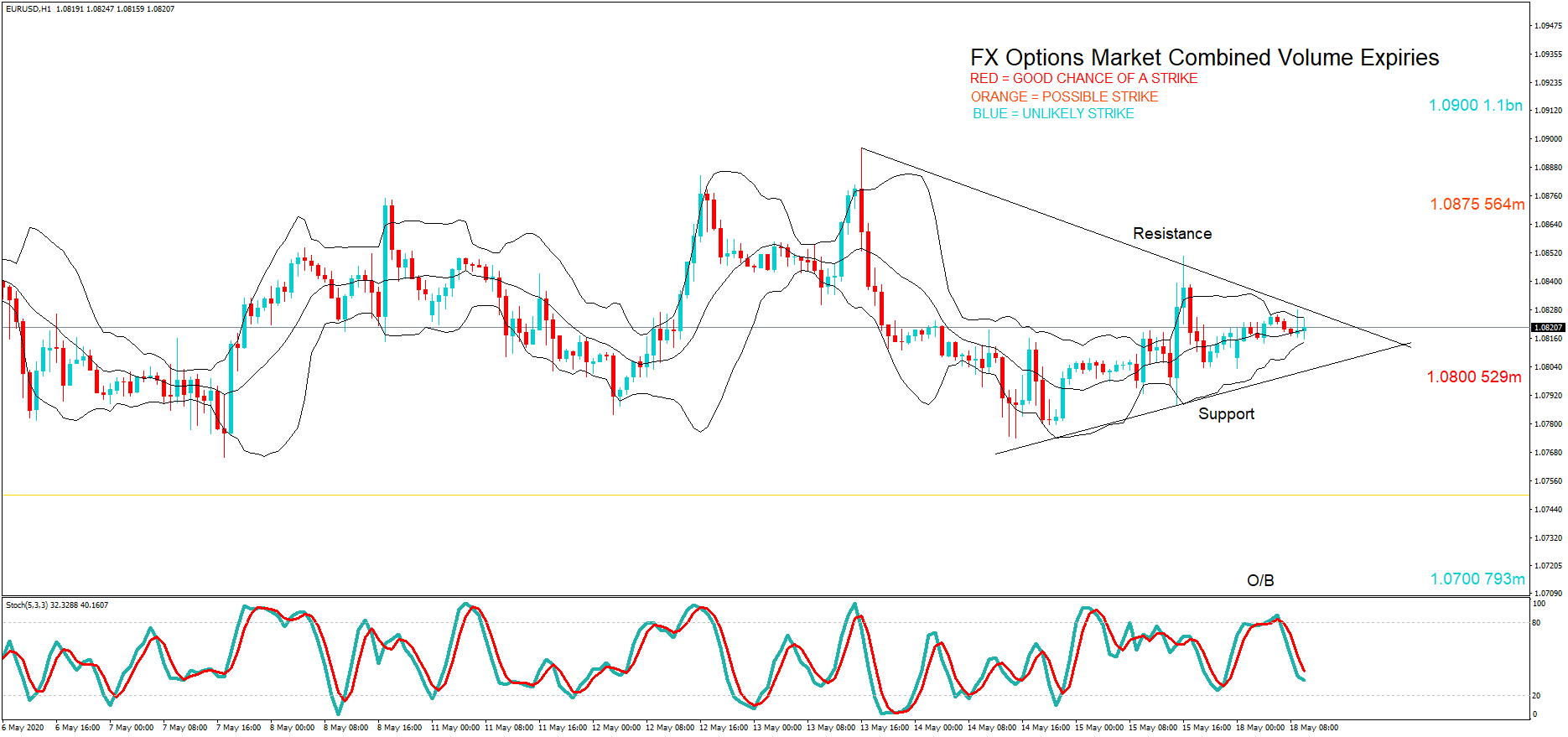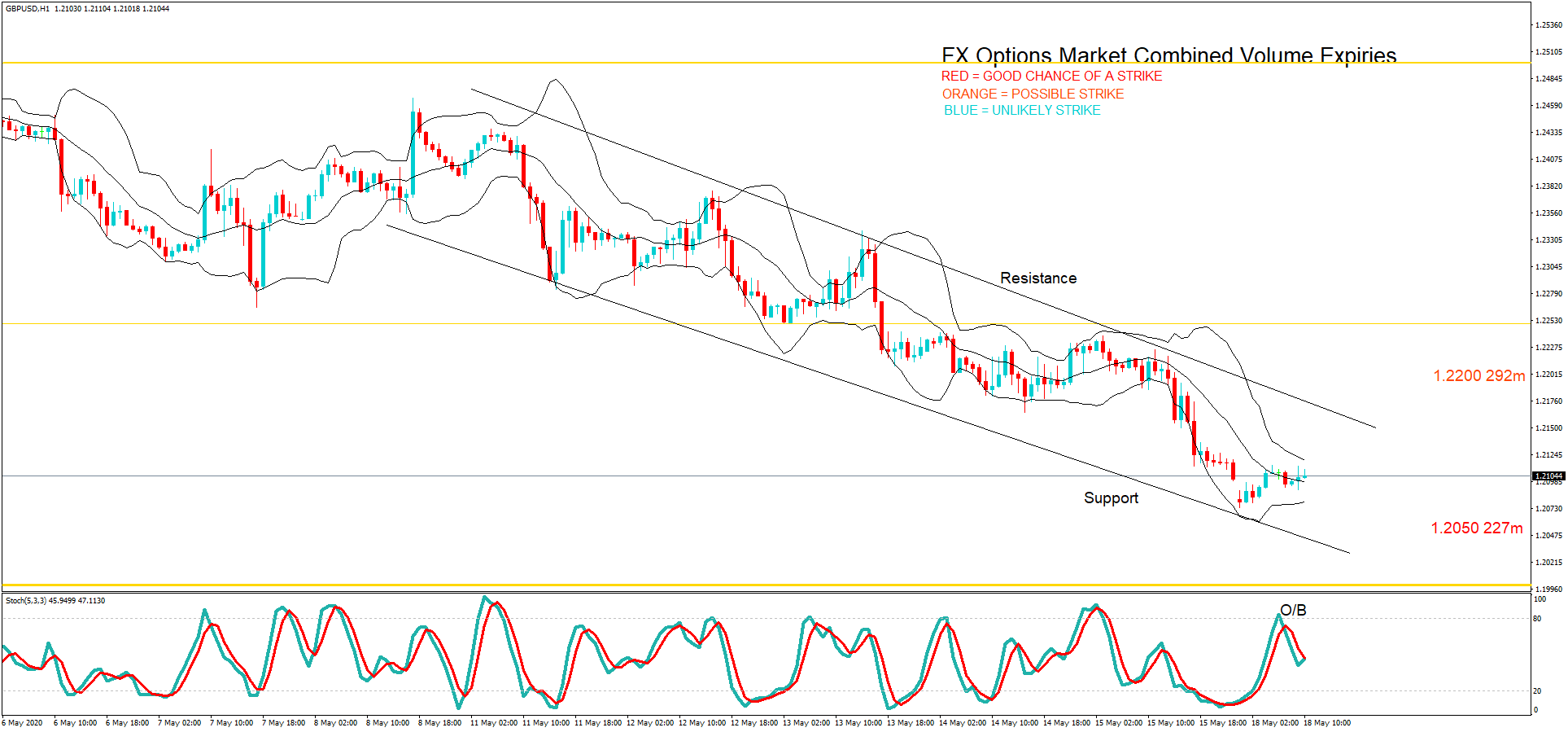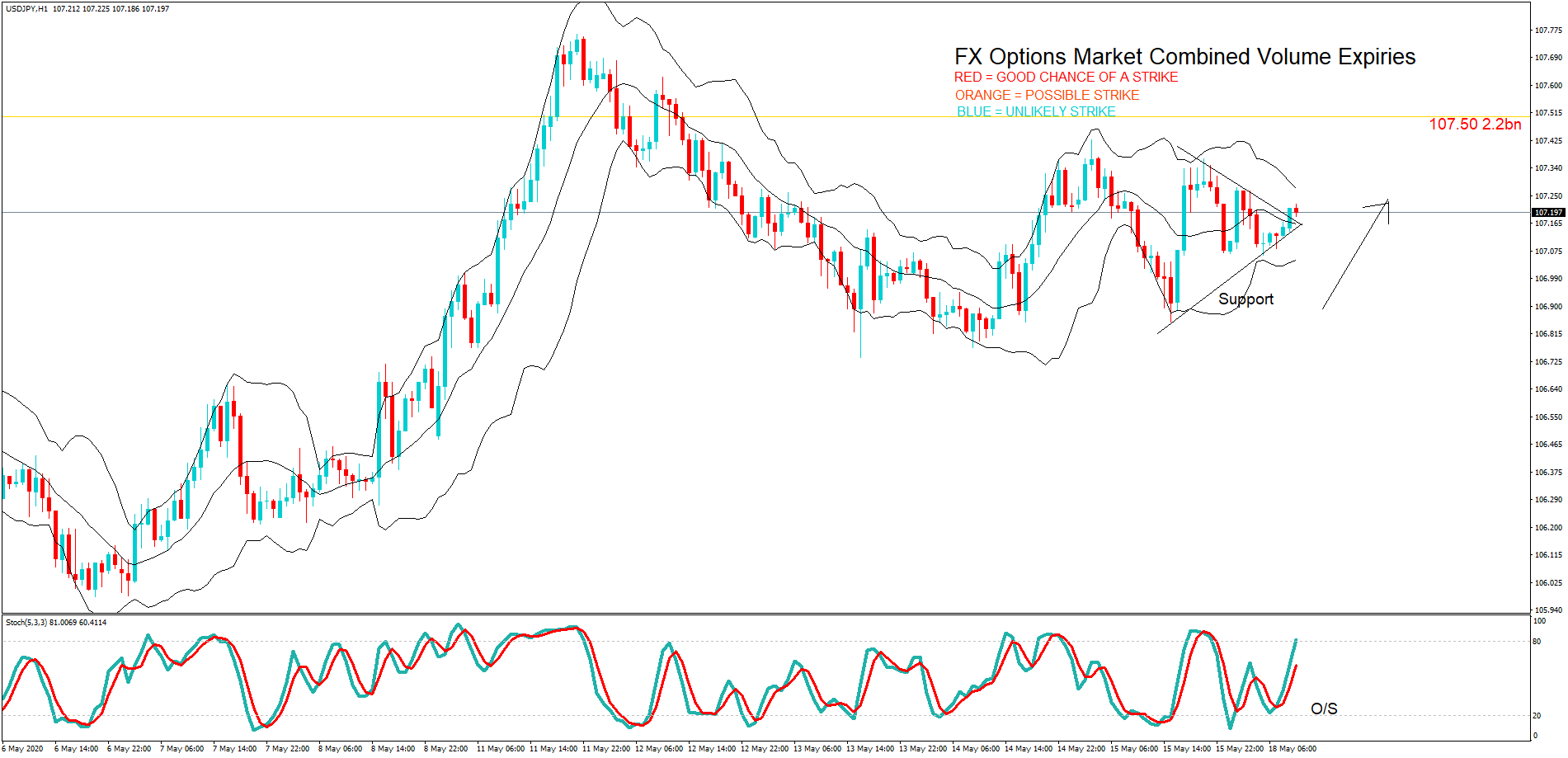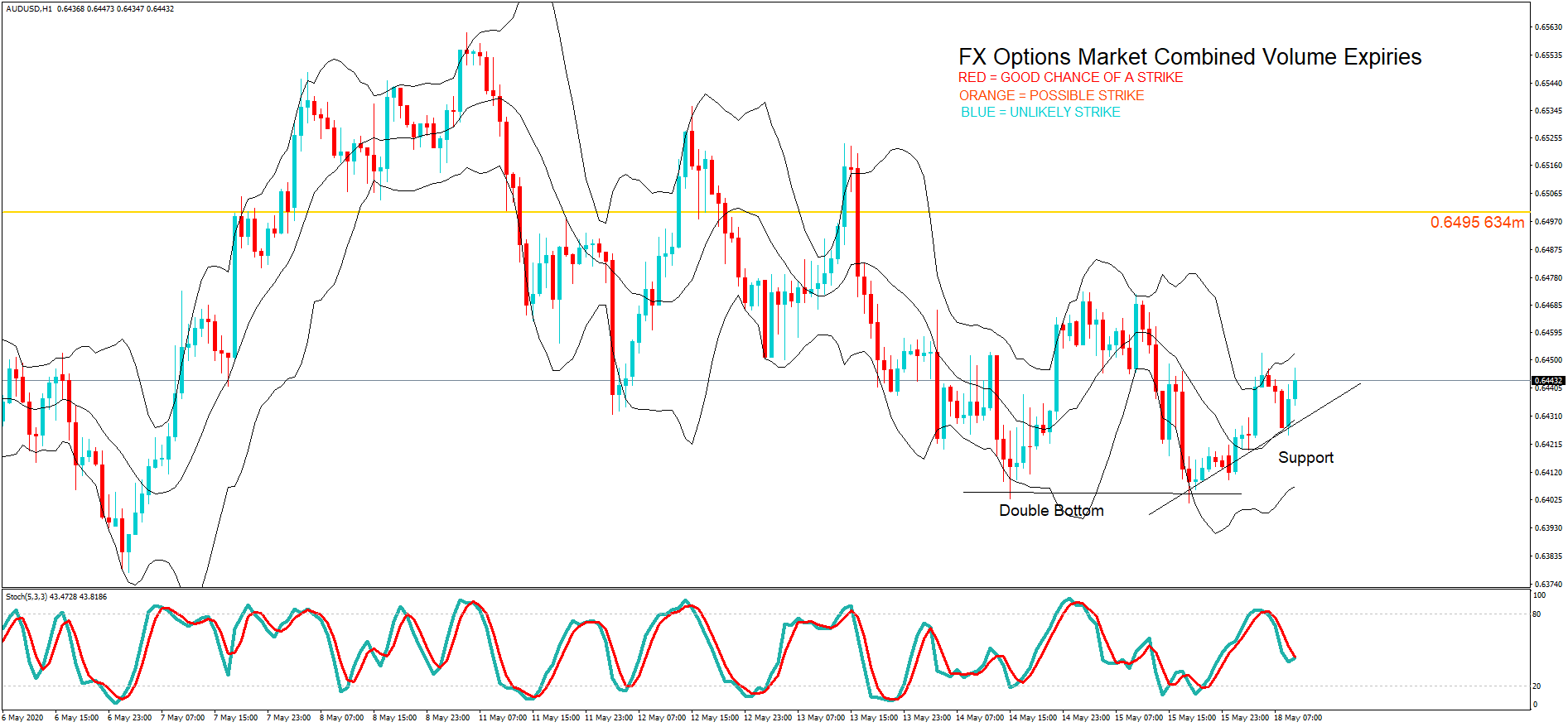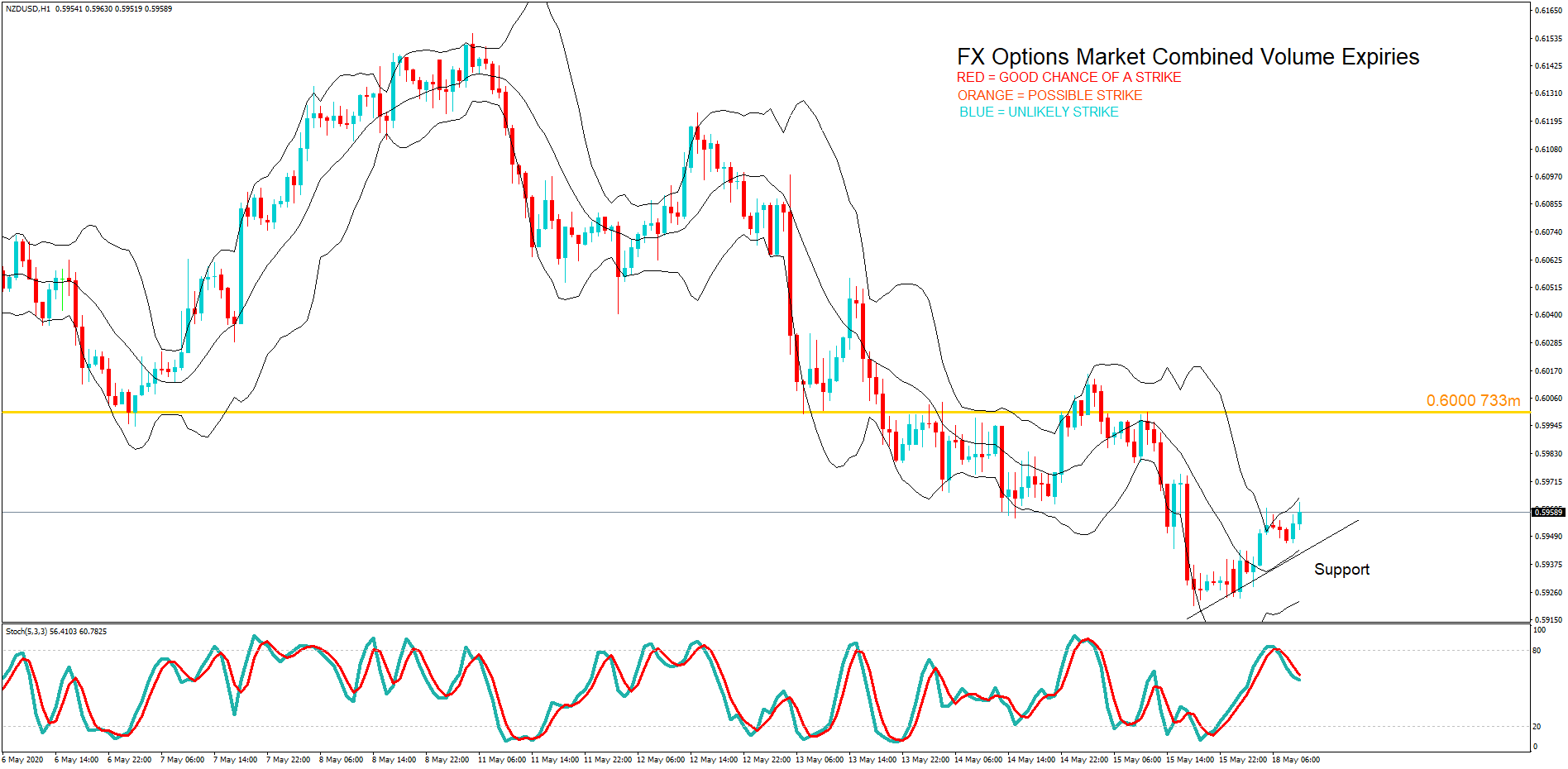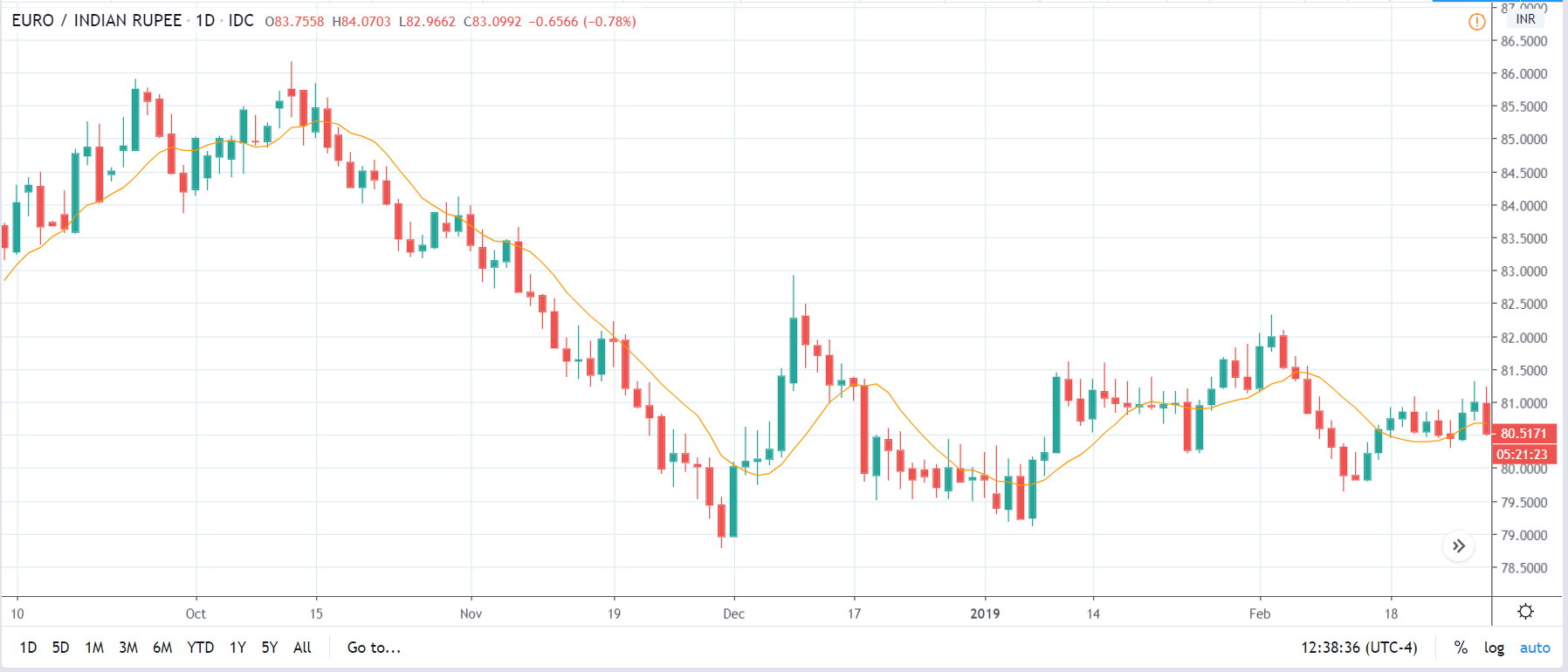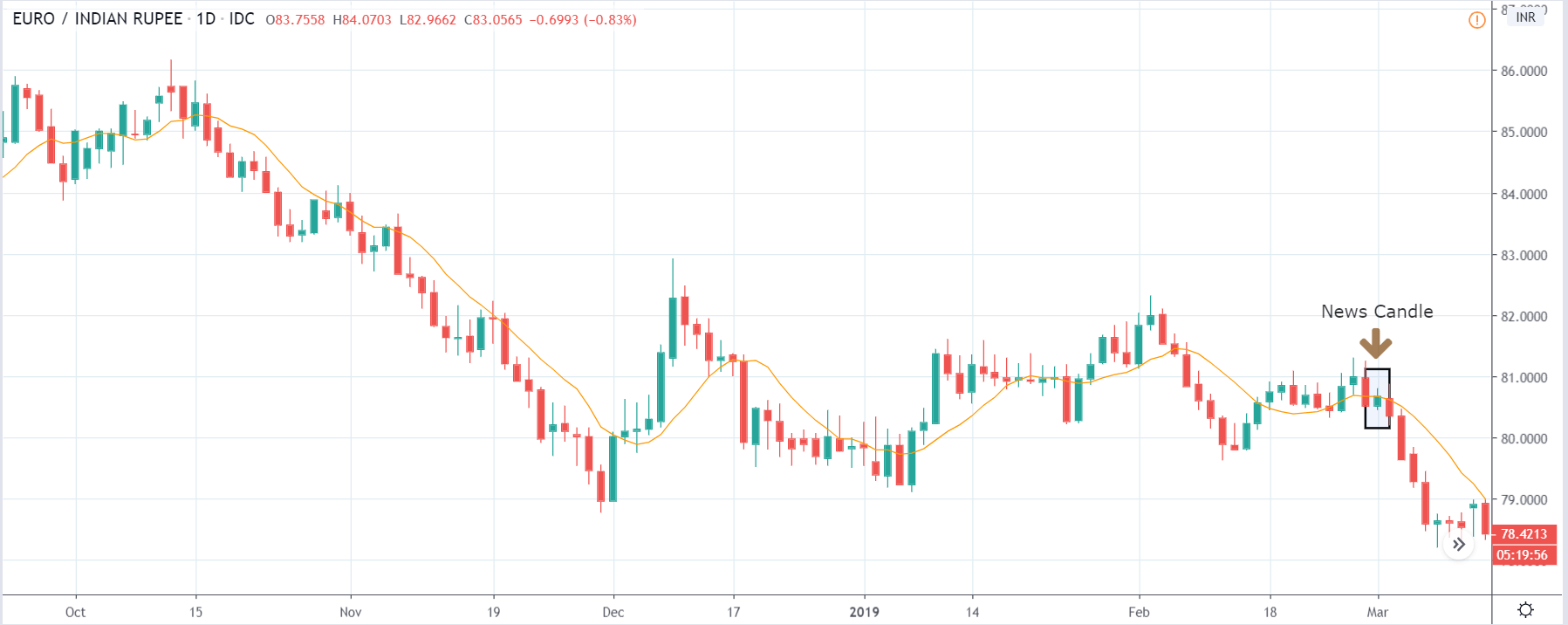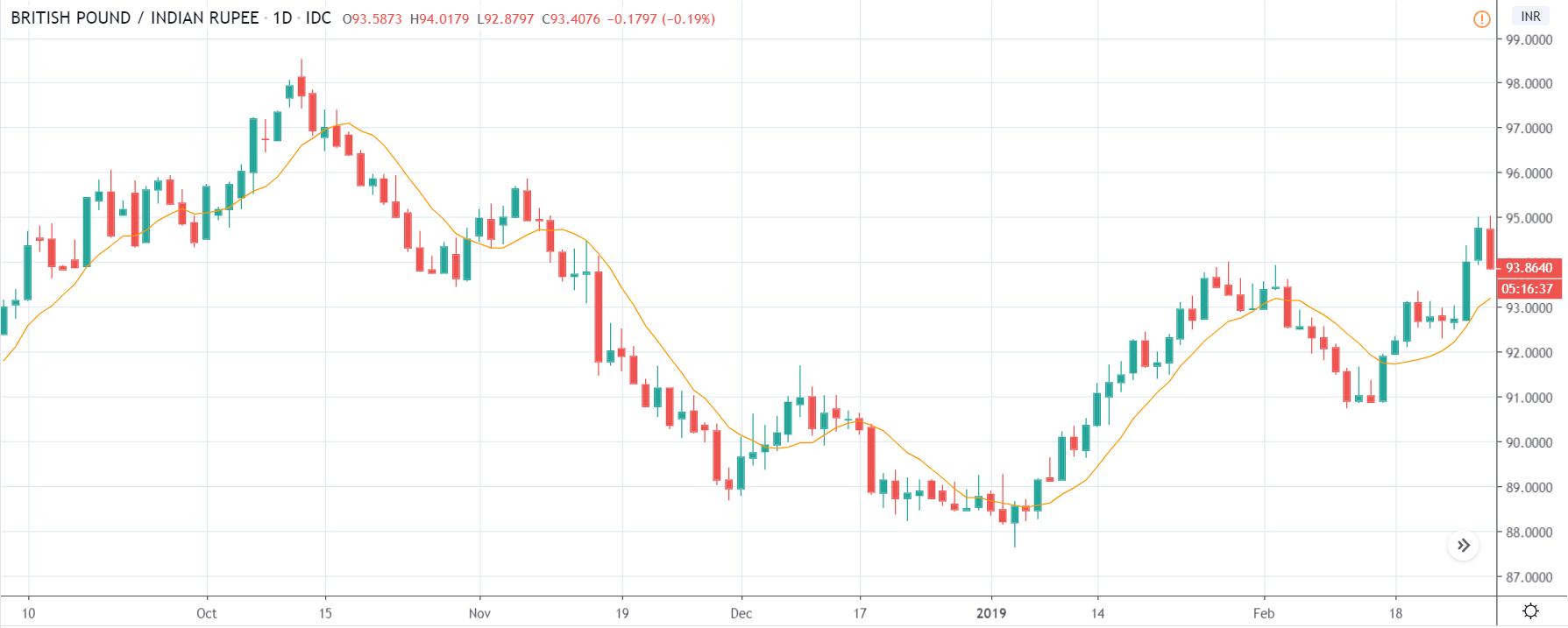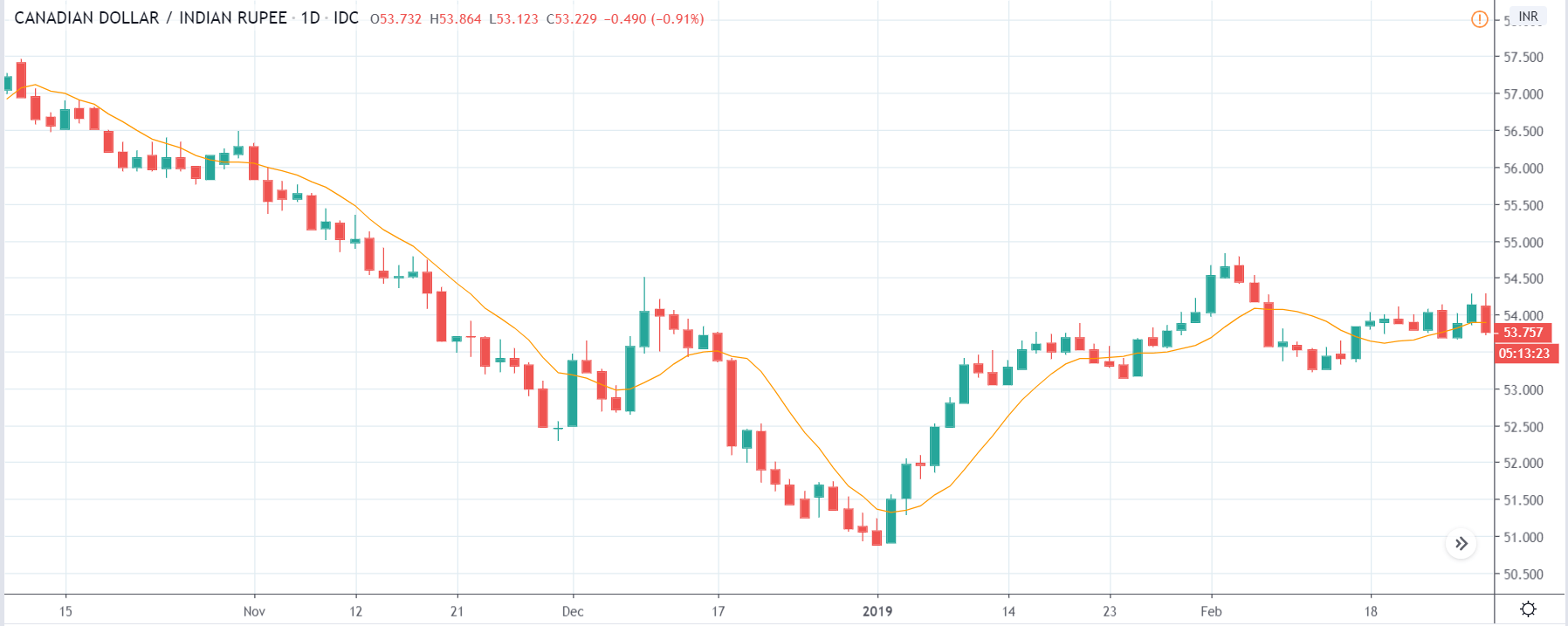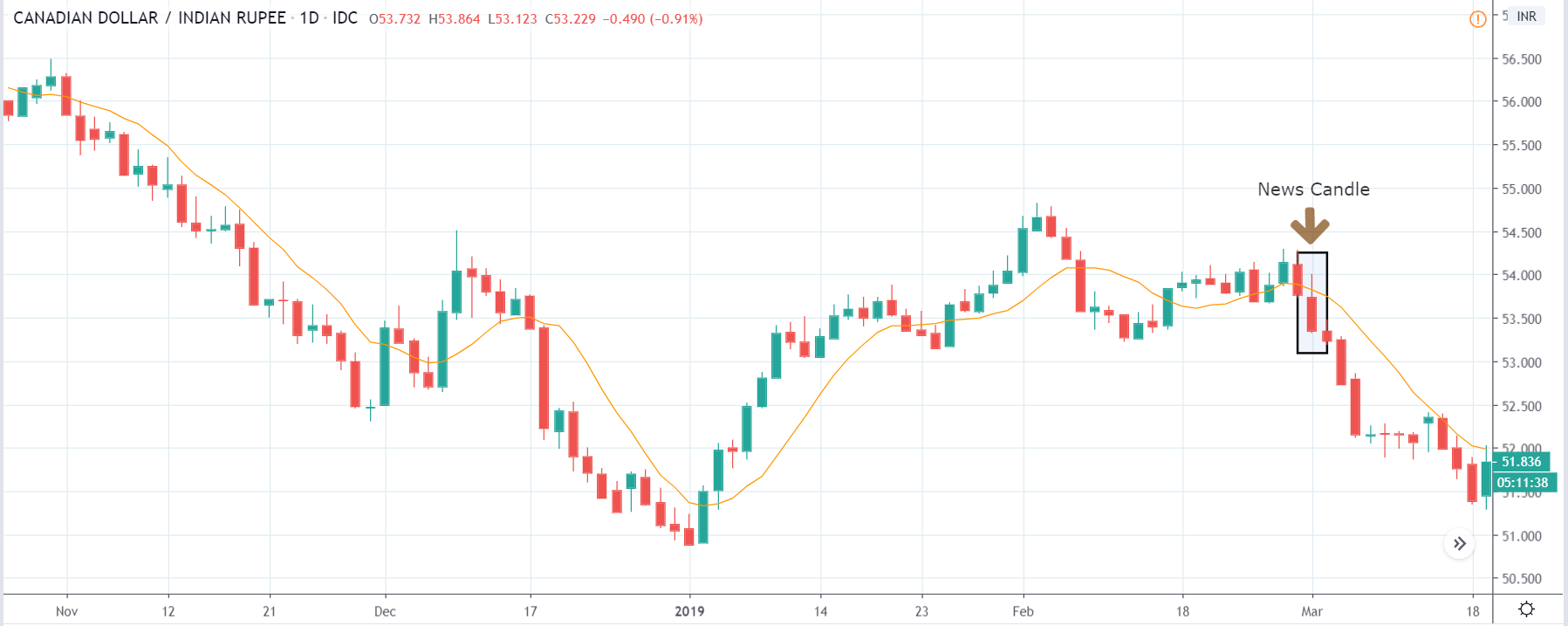Introduction
Business people, Investors, and Politicians are often more interested in where the economy is heading than where it has been in the past or where it is right now. In this regard, the Leading Economic Index receives more attention than Coincident Index indicators or any individual economic indicators.
Leading Economic Index gives a more accurate snapshot of the future economic trend than any individual leading or coincident indicator. In this sense, the Leading Economic Index is essential to observe the economy’s ‘big picture’ better.
What is the Leading Economic Index?
Leading Economic Index is an amalgamation of multiple leading economic indicators that give us a better snapshot of the economic prospects of the country.
Economic Activity Index: The Economic Activity Index for the states presently includes five indicators, namely: non-farm employment, unemployment rate, average hours worked in manufacturing, industrial electricity sales, and real personal income minus transfer payments. It is a Coincident Economic Index that tells us the current economic situation in the broader sense. The below table summarizes the composition of the Economic Activity Index.

The Leading Economic Index uses the Economic Activity Index for each state as well as various state, regional, and national variables to predict the nine-month-ahead change in the state’s economic activity index. This estimate of the nine-month percentage change in the state’s current Economic Activity Index is the state’s Leading Index.
Hence, by using a mix of coincident indicators, leading indicators, and other variables, the Leading Economic Index is constructed. The below table summarizes the composition of the Leading Economic Index.

The Leading Economic Index has the base period 1992, i.e., the Leading Economic Index score for the year 1992 is 100. Based on this period, all subsequent index periods are scored.
A score below 100 is observed as contractionary. A score above 100 is seen as expansionary for the economy. The Leading Economic Index uses a time-series model (vector autoregression). The current and prior values of the forecast are combined to determine the future values of the index.
Below is a snapshot of the Leading Economic Index of the three districts and the USA:
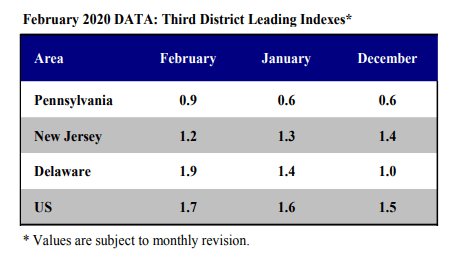
(Source – Philadelphia Fed)
How can the Leading Economic Index numbers be used for analysis?
Individual economic indicators like Initial Unemployment Claims, Purchasing Manager’s Index from the Institute of Supply Management, Employment rate can often give conflicting signals.
No one indicator can give us the broader economic outlook that we are seeking to have. It is often preferred to have an idea on different sectors (private, public, or manufacturing, services, or business, consumer) and different economic indicators to obtain a complete macroeconomic picture.
An economy consists of many moving parts, imports, exports, jobs, businesses, banks, money supply, etc. all these economic levers push or pull the economy. With so many levers in place, it is indeed difficult for the common man to know for sure the overall economic condition. The geography also plays a part, a slow down in one state does not necessarily translate to the overall economic slowdown, it might even be the case ten other states have improved above average.
In this regard, the Leading Economic Index is useful to get the big picture more accurately. As shown in the below plot, for Pennsylvania, four recessions since 1970 have been preceded by a minimum of three negative readings. The Leading Economic Index is generally measured as a change in percentage concerning the previous month score.
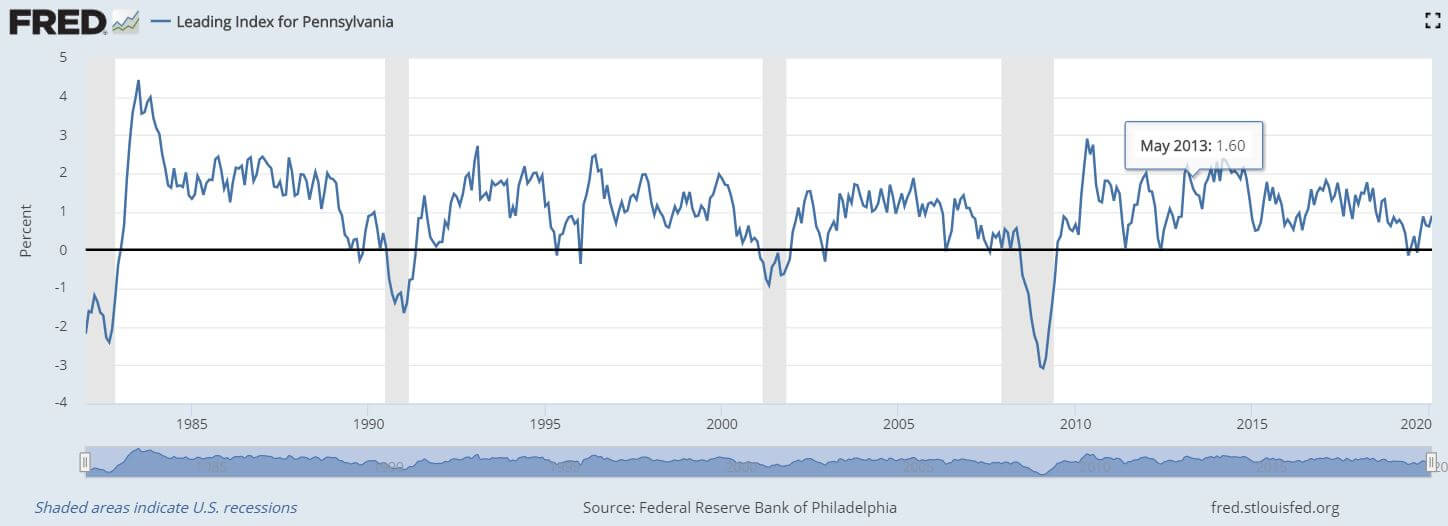
(Source – ST Louis Fed)
Impact on Currency
Improvement in the Leading Economic Index figures signals an expansionary growth in the economy ahead, which is appreciating for the currency and vice-versa.
In this sense, the Leading Economic Index is a leading and proportional economic indicator, i.e., it forecasts growth and the increase or decrease in figures generally translate into improvement or deterioration of the economic growth.
The Leading Economic Index is a low impact indicator as the data from the individual indicators that make up the Leading Economic Index would have already been released a week before, and the corresponding market short-term moves would have already taken place. Although, the long-term trends and forecasting power of the Leading Economic Index makes it a suitable tool for investors and long-term traders to assess economic direction over a time horizon of 3-6 months better.
Economic Reports
The Federal Reserve Bank of Philadelphia releases the Leading Economic Index for all of the 50 states. The Indexes are released every month generally a week after the release of the composing coincident indicators. The release dates for the upcoming year’s Leading Economic Index reports are already posted on its website.
Sources of the Leading Economic Index
The State’s Leading Economic Index is available on the official website of the Federal Reserve Bank of Philadelphia:
Leading Economic Index – FRB -P
Release Schedule – Leading Economic Indexes
The Leading Economic Index and the Coincident Economic Activity Index are also available on the St. Louis FRED website:
Leading Economic Index – FRED
Coincident Economic Activity – FRED
The Leading Economic Index for various countries are available here in statistical and list form:
Impact of the ‘Leading Economic Index’ news release on the price charts
In the previous section, we described the Leading Economic Index fundamental indicator, where we said that it is a composite index that is based on nine economic indicators and is used to predict the direction of the economy. The data is gathered from economic indicators related to consumer confidence, housing, money supply, stock market prices, and interest rate spreads. The report tends to have a relatively muted impact on currency pairs because most of the indicators that are used in the calculation are released previously.

The below image shows the previous and latest data of Leading Economic Index indicator, where we see a decrease in 0.4% compared to the previous month. A higher than expected data should be taken to be positive for the currency and vice-versa. Let us observe the change in volatility due to the news release.

AUD/USD | Before the announcement:
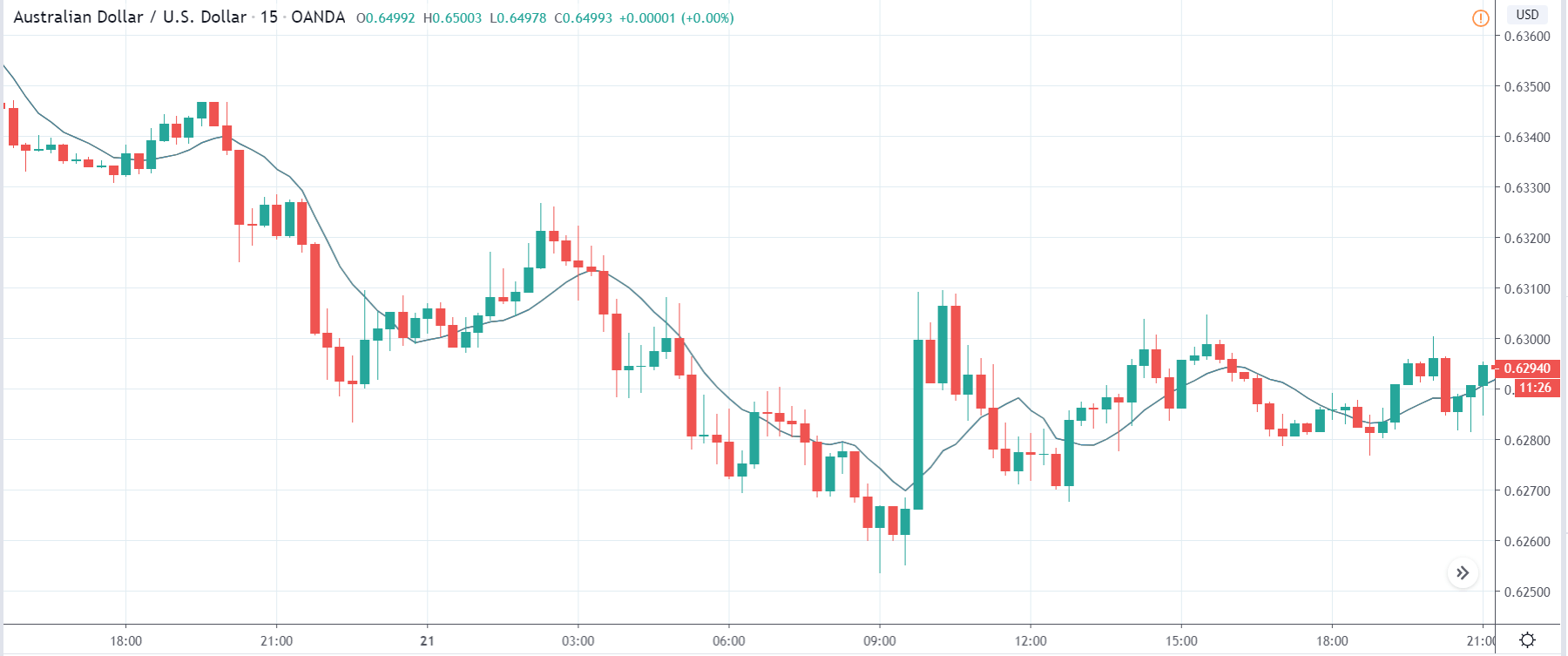
The above image shows the chart of the AUD/USD currency pair before the news announcement. We see that the price is in a downtrend, and recently it has formed a ‘range.’ This looks like a retracement where the price may continue its downtrend after touching a key technical level. Depending on the news data, we shall take an appropriate position in the market.
AUD/USD | After the announcement:
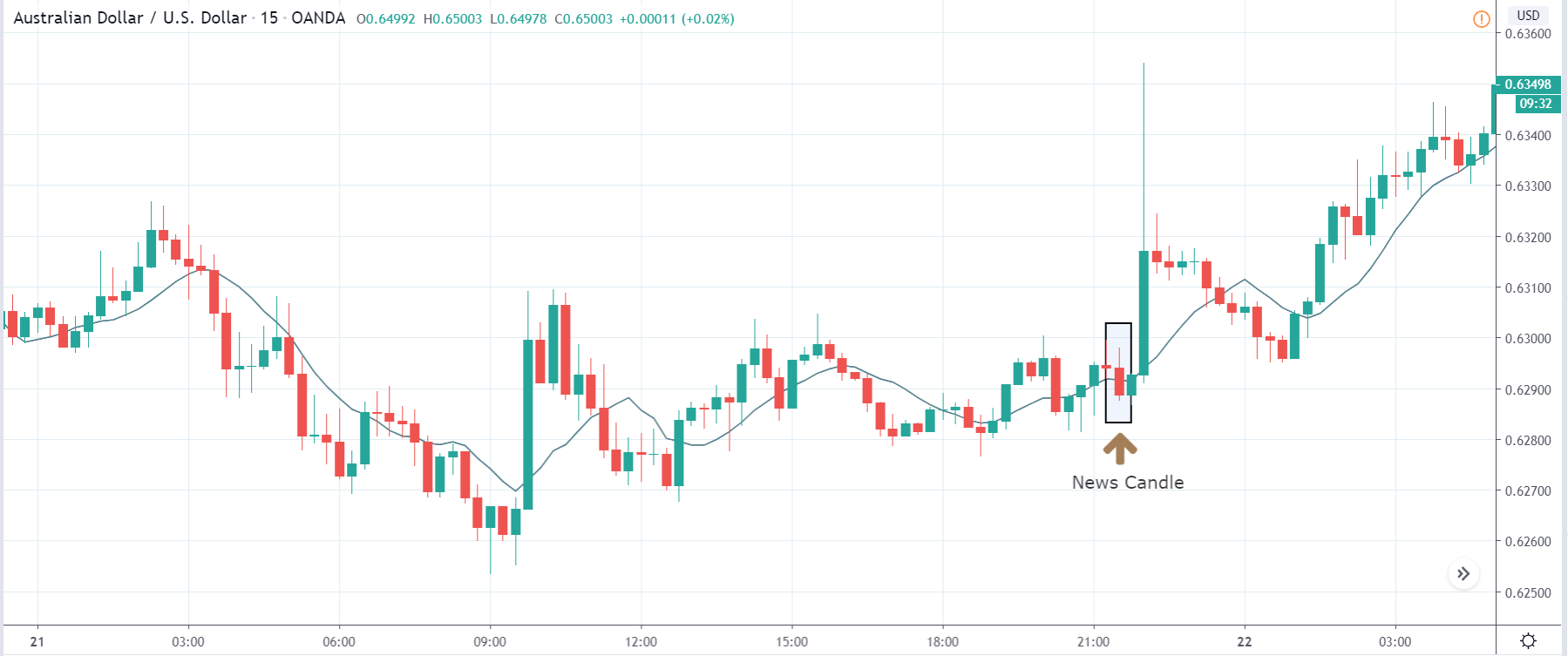
After the news announcement, the price falls and goes below the moving average, indicating that the Leading Economic Index data was negative for the economy. As there was a decrease in the value, traders went ‘short’ in the currency pair and increased the volatility to the downside. This was accompanied by another news event that was positive for the Australian dollar, and hence we see the sharp rise in price. Nonetheless, the Leading Economic Index was bad for the economy due to which the currency weakened initially.
AUD/CHF | Before the announcement:

AUD/CHF | After the announcement:
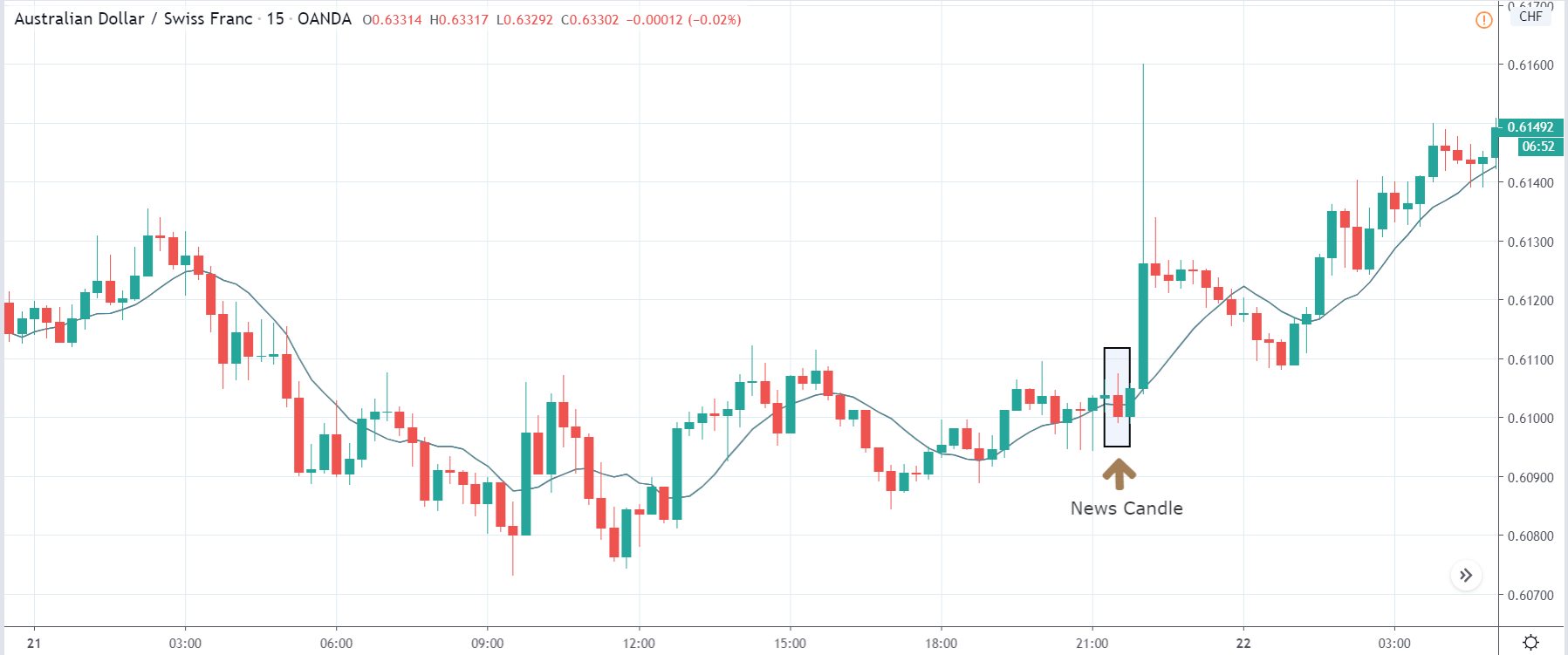
The above images represent the AUD/CHF currency pair, where we see that the characteristics of the chart are similar to the above-discussed pair before the news announcement. Here too, the market is in a downtrend signifying weakness in the Australian dollar, and the price has pulled back from its ‘lows’ recently. There is a possibility that the downtrend might continue depending on the outcome of the news. After the news announcement, the market moves lower, and the price closes as a bearish ‘news candle.’ Since this announcement followed another news release, one needs to be cautious before taking any position in the market. If we are to analyze this data alone, we can expect an increase in volatility to the downside, leading to further weakening of the currency.
EUR/AUD | Before the announcement:
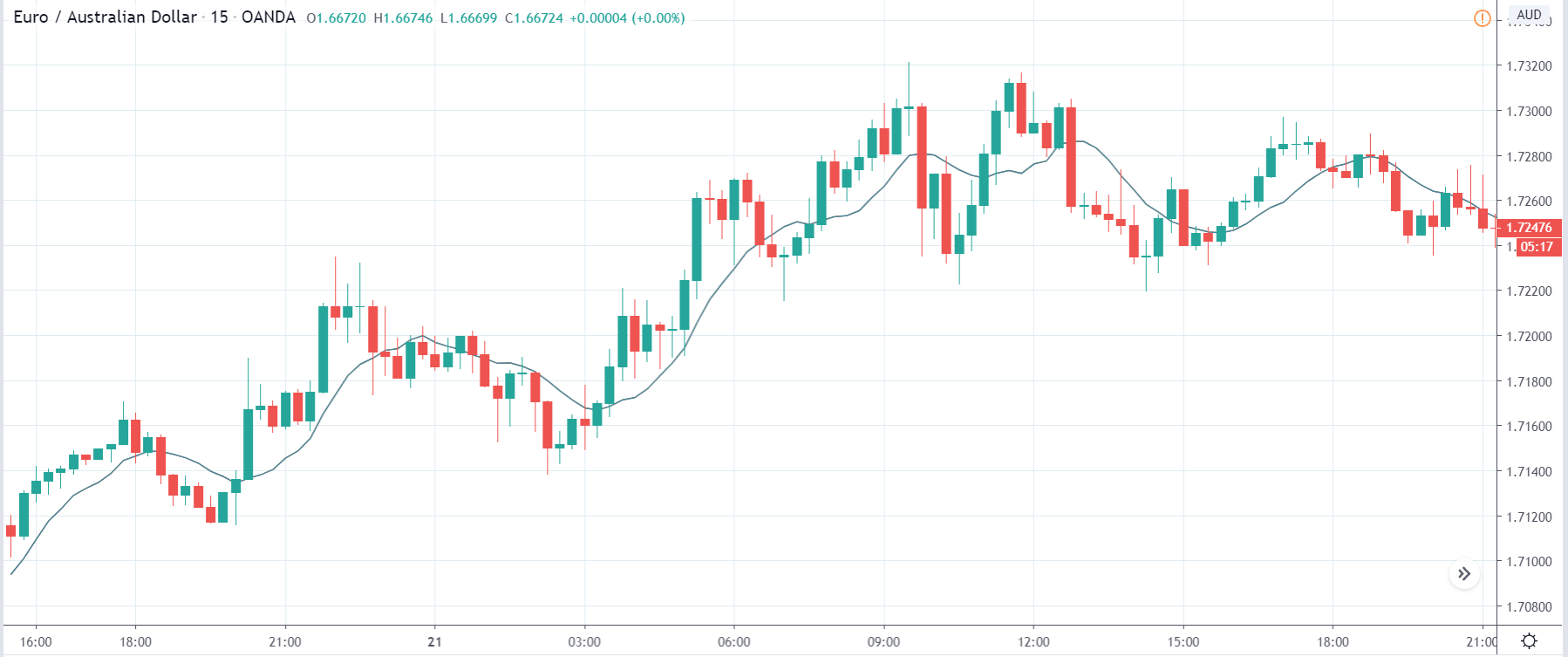
EUR/AUD | After the announcement:
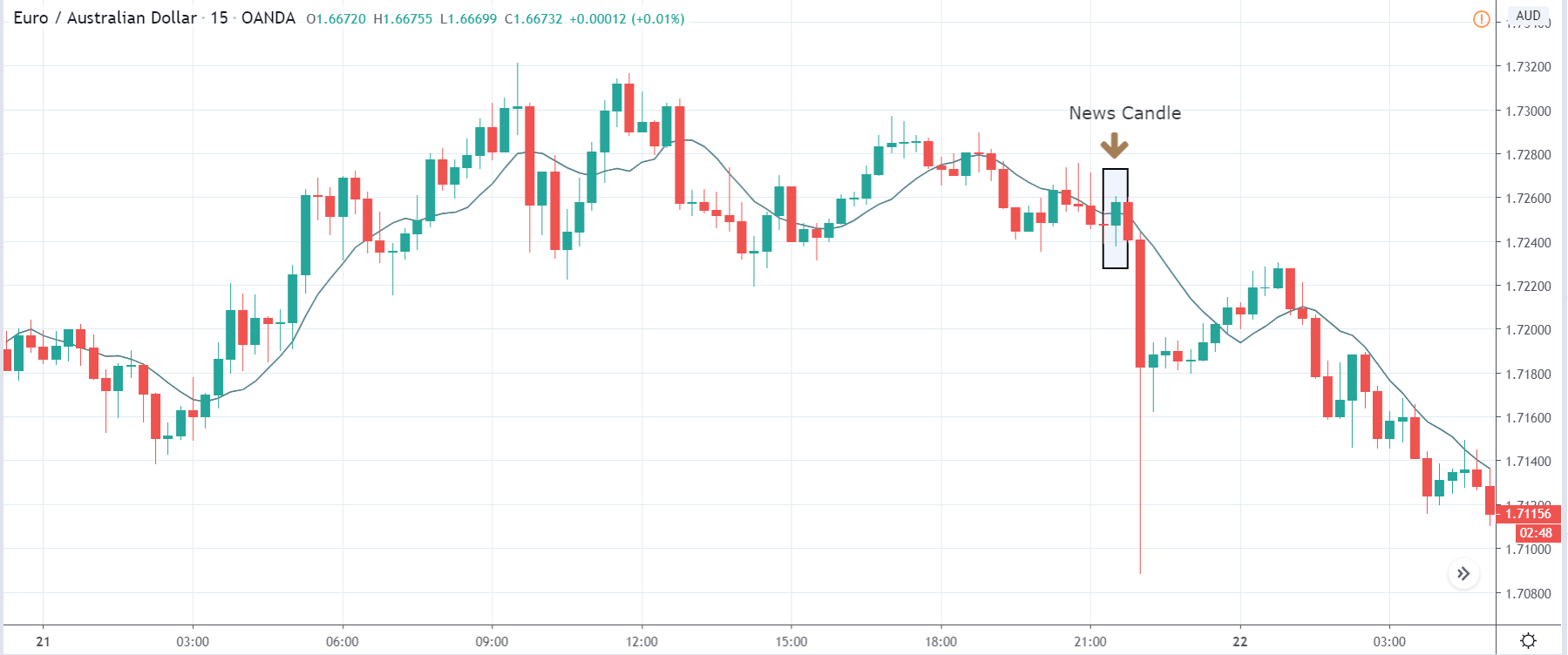
The above images are that of the EUR/AUD currency pair, and here, the market is an uptrend before the news announcement. Since the Australian dollar is on the right- hand side of the pair, an up-trending market indicates weakness in the currency. The price is currently moving in a ‘range,’ and just before the news release, it is at the bottom of the range. Ideally, this is the ideal place for going ‘long’ in the market. Aggressive traders can take a ‘long’ position with a stop loss below the support. After the news announcement, we see that the market moves higher, and the bullish ‘news candle’ indicates weak ‘Leading Economic Index’ data where there was a reduction in the value for the current month. Compared to the other fundamental drivers, the Leading Economic Indices news release would have taken the currency higher, and high volatility would be witnessed on the upside. Therefore, we need to keep a watch on the economic calendar to be aware of all the news announcements.
That’s about the ‘Leading Economic Index’ and its impact on the Forex market after its news release. If you have any questions, please let us know in the comments below. Good luck!


